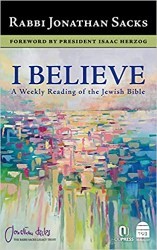In this illuminating, nuanced study, Malka Z. Simkovich, director of the Catholic-Jewish Studies program at Catholic Theological Union in Chicago, examines the origins of the Jewish Diaspora by analyzing letters and novellas from the Hellenistic period, where the term “diaspora” first occurs.
Simkovich looks at documents written in Judea and Egypt during the second century BCE to determine how Judean and Egyptian Jews understood themselves in relation to each other. Judean Jews saw diasporic Jews as living in exile, which they believed was punishment for their sins. They also had less political power than their Egyptian counterparts, a factor Simkovich believes could partially explain why they drew “an invisible boundary” between themselves and diasporic Jews: they wanted to establish themselves as the authorities on correct Jewish practice.
Egyptian Jews rejected notions of punishment and exile and tried to maintain a delicate balance that showed their devotion to both Judea and Egypt. They attempted to universalize the Jewish experience by using the written Torah, which indicates that all Jews, no matter where they reside, deserve God’s love.
Judean and Egyptian Jews employed Hellenistic letter-writing techniques to demonstrate the authority of their perspective. One such technique, pseudepigraphy, attributes the work to a prominent heroic ancestor, thus situating it in an older tradition. Similarly, ventriloquy draws on the past by embedding citations of ancient texts. Mirroring involves the use of multiple narrators who share the author’s opinion, and mise en abyme focuses on actions identical to those that occurred in the past.
Simkovich also provides an in-depth analysis of the Judean adaptation of the Book of Esther, the Purim tale in which Esther and Mordechai bravely save the Jews of Susa in Persia. The original Hebrew version of the text does not mention God or Jerusalem, and depicts Jews living outside of Judea in a heroic light. In the Judean version, however, God, piety, and Jerusalem are all central elements.
Letters from Home contains fascinating examples that outline the origins of Jewish self-identity in the homeland and the Diaspora. Simkovich’s subtle analysis is relevant for Jews today.
Linda Kantor-Swerdlow is a retired Associate Professor of History Education from Drew University and the author of Global Activism in an American School: From Empathy to Action. She is currently freelancing and reviews books and theater.





